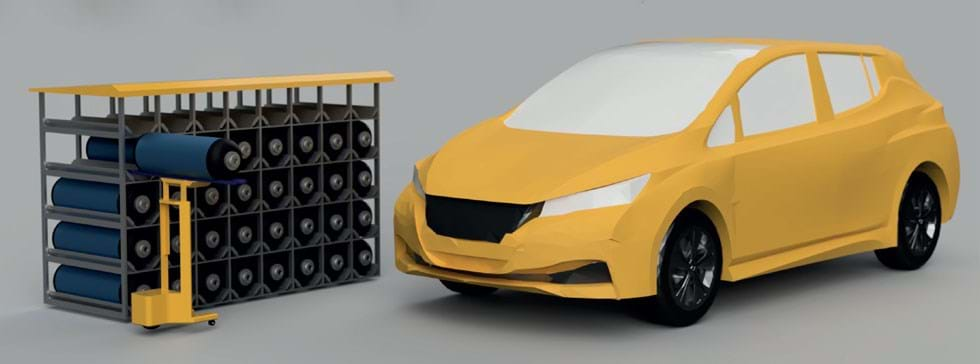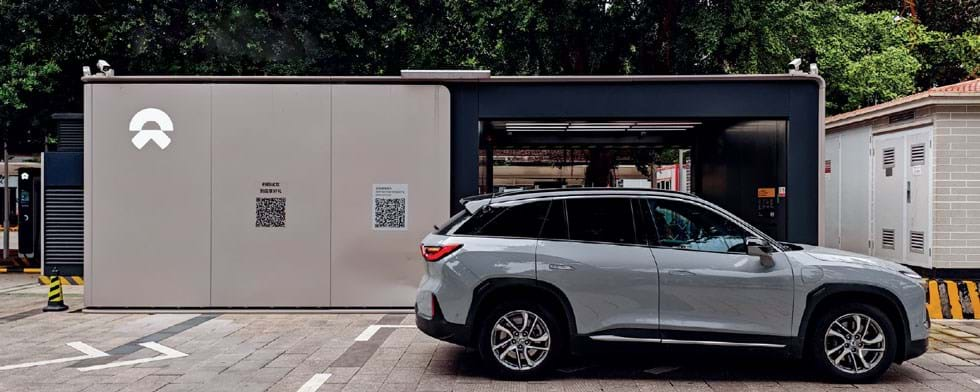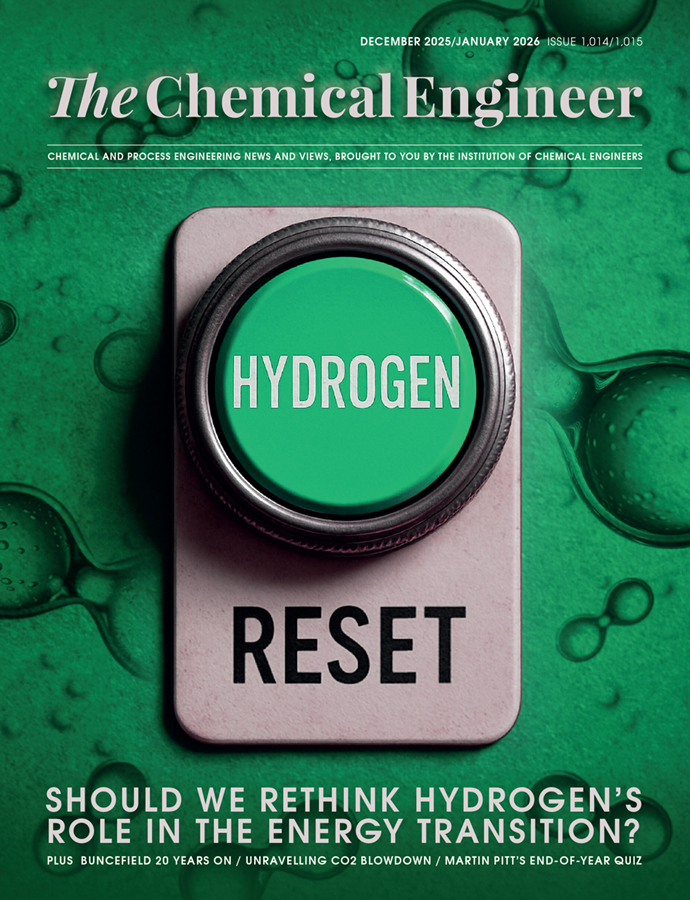Our Research Focus: Swappable Hydrogen Fuel Tanks
Could swappable hydrogen storage tanks revolutionise refuelling for low-carbon road vehicles? A PhD project at the University of Bath in the UK aims to make an alternative refuelling infrastructure a reality with a new concept design
Quick read
- Cutting station complexity: Swappable hydrogen tanks remove the need for costly and failure-prone components like chillers and compressors at refuelling sites
- Centralised safety checks: Tanks can be refilled, inspected and retired at dedicated facilities, improving safety and extending lifespan
- Unlocking hydrogen adoption: A modular, swappable system could help overcome infrastructure barriers and accelerate low-carbon transport uptake

IMAGINE if refuelling your car was easy as changing a lightbulb? No need for hoses or cables. No need even to lift a finger, with swappable fuel tanks and robotic attendants for cars, buses and trucks under one standardised fuel tank architecture.
My name is William Forshaw and I am developing a swappable, high-pressure hydrogen gas storage tank concept as part of my research project funded by the EPSRC Centre for Doctoral Training in Advanced Automobile Propulsion Systems at the University of Bath (https://www.aaps-cdt.ac.uk). The concept came about from a suggestion to modularise hydrogen storage from Professor Tim Mays at the university, and my understanding of the challenges facing sustainable transport.
Energy for transport accounts for roughly a quarter of global CO2 emissions but vehicles fuelled by green hydrogen can help reduce this figure. A barrier is the “chicken and egg” challenge with drivers reluctant to buy vehicles without a place to refill and businesses unwilling to invest in stations without customers lined up. Swappable batteries are already growing in popularity1 with Chinese electric vehicle company NIO putting them in SUVs and India developing standards for swappable electric bus batteries. However, swappable hydrogen has remained relatively unexplored in the public domain.


Reducing costs and increasing reliability
In a conventional refuelling station design, high-purity hydrogen is delivered or produced onsite. This is compressed to a delivery pressure then dispensed through a nozzle into the vehicle. Due to the high pressures involved (~950 bar(a) / ~95 MPa(a)) and the negative Joule-Thompson coefficient of hydrogen, a pre-chiller unit is needed to counteract the heating experienced during refuelling which pre-cools the gas to around –40°C (233K). Compressors, chillers and dispensers are the most expensive components of a refuelling station2 and they are also responsible for a majority of the maintenance and servicing downtime.3 Therefore, removing these components from individual stations would drastically reduce their construction and operating costs while also increasing reliability.
I propose a different way of refuelling via the swappable method. Empty hydrogen tanks are removed by a robotic attendant and replaced with a full tank from a nearby storage rack; the customer can then drive away. A delivery vehicle can visit the station and drop off full tanks before the empties are collected and returned to a central distribution centre. Here, they are refilled at scale using green hydrogen and compressed using renewable electricity. This can be done when energy is available at a low-cost during off-peak times and at a slow, steady pace removing the need for chilling equipment. As the gas is transported at a much higher pressure and in lighter carbon-fibre vessels, road transportation is much more efficient compared to a typical steel tube trailer. I have calculated that delivering conventional hydrogen requires ~46 MJ kg-1 while a swappable system only requires ~14 MJ kg-1 for an equivalent distance, representing a significant improvement in well-to-tank efficiency.
While the technology is in its early stages, a swappable system is expected to be safer. As the fuel tank is pressurised to the final delivery pressure in a central facility by trained personnel, each refuelling station would not require its own gas handling plant, reducing both cost and risk exposure. While using multiple smaller, swappable containers increases the number of potential leak points, the risk is mitigated by the significantly lower impact of a 4.1 kg tank leaking compared to a 200 kg trailer.

Composite tanks have a finite service life due to fatigue from factors like pressure and thermal cycling. They can additionally prove difficult to examine when mounted inside a vehicle.
With a swappable system, tank health could be regularly tested when they are refilled at the central facility using non-destructive methods like X-ray scanning to ensure they are safe and in service for longer. Tanks that are damaged or near the end of their service life can automatically be removed from circulation and collected for repair or recycling, disconnecting tank wear from vehicle life. However, work will need to be done to guarantee the functionality of the quick-disconnect system for general road use and to ensure safety in the event of a crash.
The next work packages for the project involve a full techno-economic analysis comparing conventional and swappable hydrogen systems using Life Cycle Impact Assessment. This is key to understanding whether swappable systems are a practical way to help cut human-made CO2 emissions cost-effectively.
I am currently working to publish these initial findings in a peer-reviewed journal. After graduation I have ambitions to develop the swappable hydrogen concept further as well as seeking other challenges requiring creative problem-solving.
Contact me at wf374@bath.ac.uk for further details, or Tim Mays at cestjm@bath.ac.uk or Tom Fletcher at tpf25@bath.ac.uk
William Forshaw is advised by Tim Mays in the Department of Chemical Engineering and Tom Fletcher in the Department of Mechanical Engineering
References
1. Why we need battery swapping technology, Energy Policy: https://bit.ly/45I65tp
2. Advancements in hydrogen production, storage, distribution and refuelling for a sustainable transport sector: Hydrogen fuel cell vehicles,” International Journal of Hydrogen Energy: https://bit.ly/hydrogen-refuelling
3. Technical performance of HRS under high utilisation and recommendations (WP5): https://bit.ly/hydrogen-mobility-europe
Recent Editions
Catch up on the latest news, views and jobs from The Chemical Engineer. Below are the four latest issues. View a wider selection of the archive from within the Magazine section of this site.




